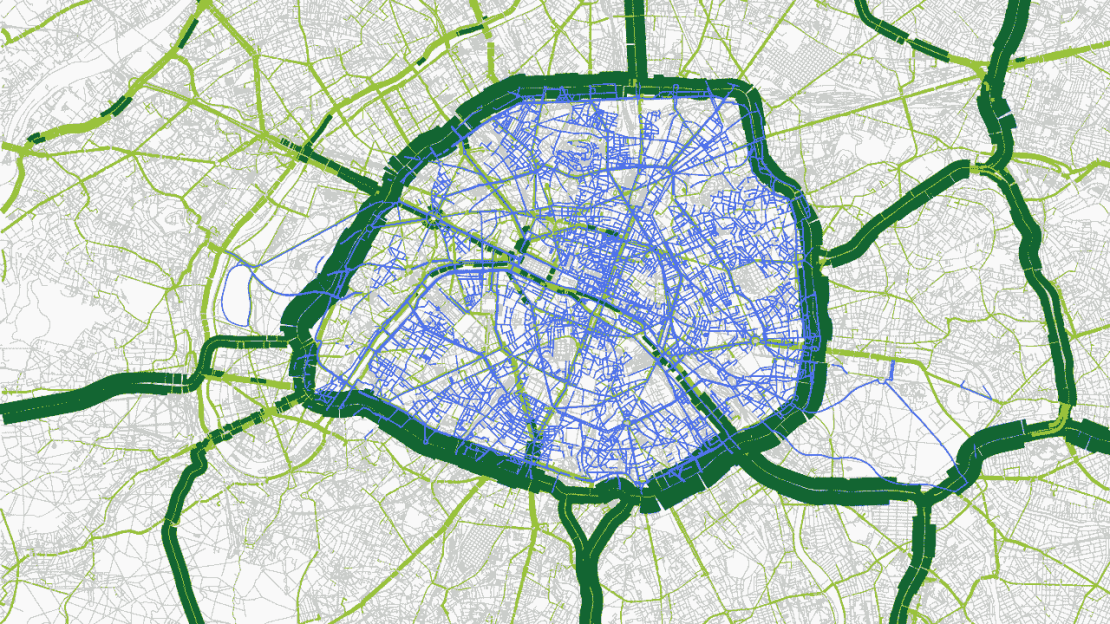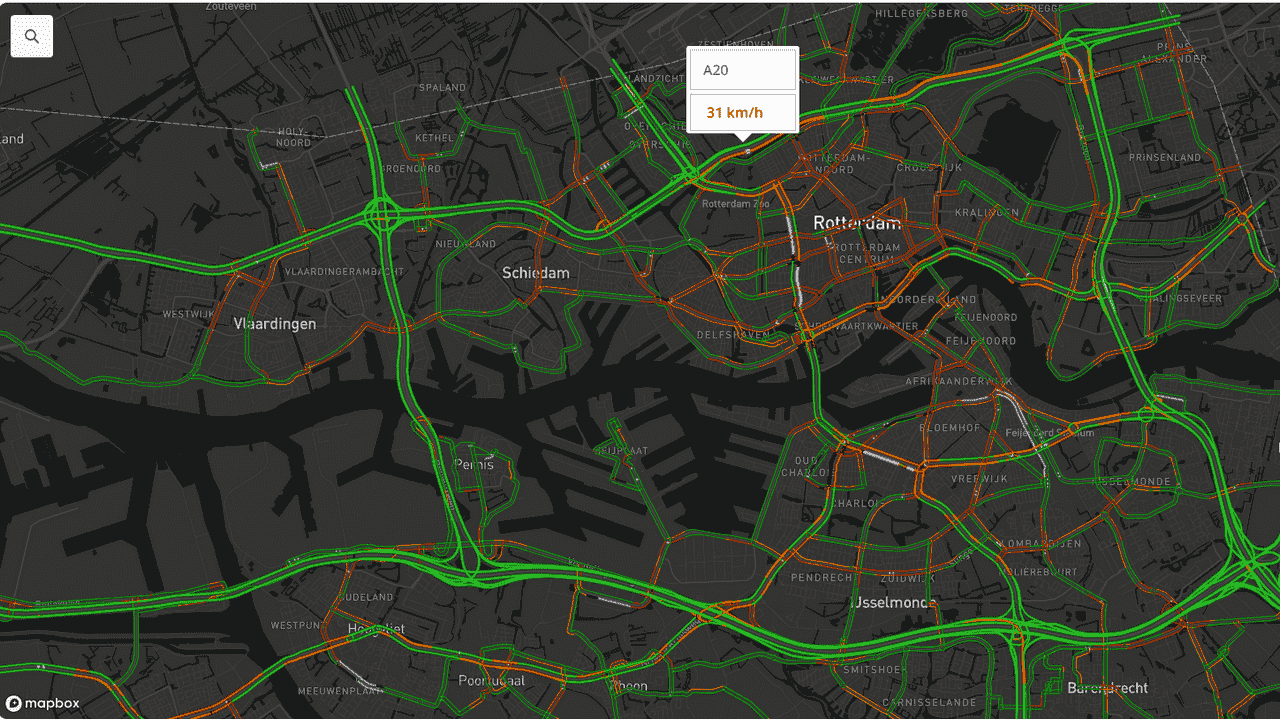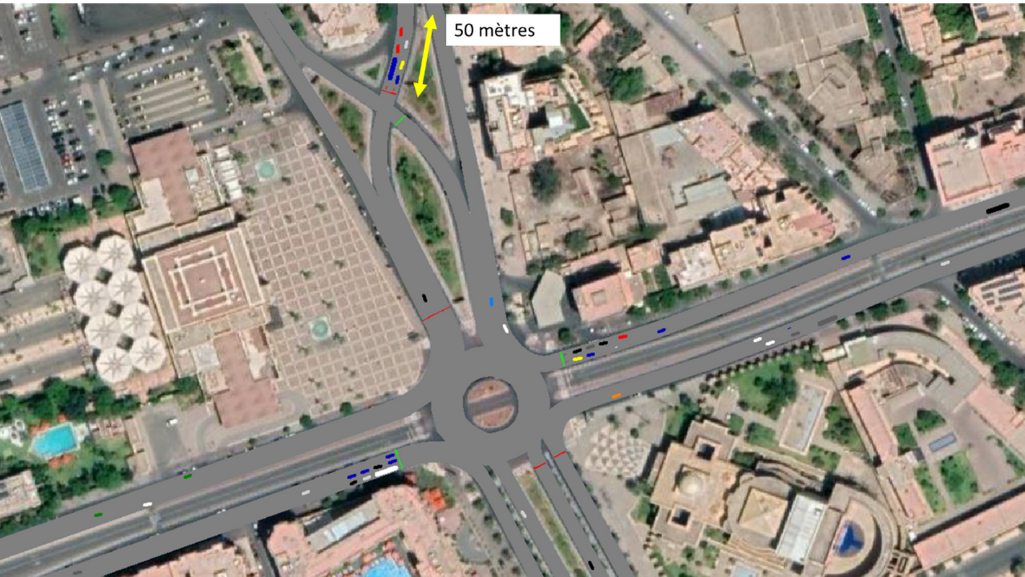Table of contents
When people hear PTV Flows, they often think of a tool that monitors traffic and detects incidents. That’s true – but it’s only part of the picture.
PTV Flows is a powerful platform that brings together high-quality mobility data, real-time analytics, and predictive insights to support professionals across the transport ecosystem. From traffic engineers and city planners to traffic managers and port and airport operators, it enables better decision-making through continuous monitoring and data validation.
Here are four surprising use cases that show how PTV Flows goes beyond traffic management – helping organizations measure, optimize, and future-proof mobility systems.
Use case 1: Reality check for your transport model
Every transport model depends on one essential ingredient: data quality. No matter how advanced the algorithms or how detailed the simulations, results can only be as reliable as the information that feeds them.

PTV Flows enables planners to benchmark their model outputs against real-world traffic conditions. By comparing predicted travel times, speeds, and congestion patterns with live data, planners gain a clear understanding of how accurately their models reflect reality.
This validation step reveals where assumptions may need adjustment, ensuring that models stay calibrated and meaningful over time. The benefit extends beyond technical accuracy – it builds confidence in model-based decisions, whether for infrastructure planning, traffic management strategies, or long-term mobility policies.
By integrating continuously updated traffic data, PTV Flows closes the gap between planning and operation, allowing models to evolve with changing conditions instead of aging into obsolescence.
Use case 2: Measuring the impact of traffic measures and projects
When a new traffic measure or infrastructure project is implemented – a redesigned intersection, a new bus lane, or an adaptive signal control system – stakeholders expect results. But proving impact is often complex, especially when relying on fragmented or anecdotal evidence.
PTV Flows simplifies this task by providing objective before-and-after comparisons. Users can visualize and quantify how travel speeds, congestion levels, or journey times changed after an intervention. The result is clear, evidence-based documentation of effectiveness that can be shared with decision-makers, funding agencies, and the public. This data-driven approach supports transparent evaluation and continuous improvement. Instead of debating perceptions, planners can demonstrate measurable outcomes – a vital step for securing future investment and maintaining public trust in mobility initiatives.
Use case 3: Keeping the port in motion, not in gridlock

Ports are the beating hearts of logistics networks, but they also present unique mobility challenges. Thousands of trucks, ships, and workers move through the same limited space, where every delay can ripple through global supply chains and incur additional costs.
PTV Flows helps port operators and logistics managers gain a real-time overview of access routes and surrounding road conditions. By monitoring live traffic data, the system can anticipate congestion, adjust arrival schedules, and coordinate gate operations more effectively.
Predictive analytics provide early warnings of bottlenecks before they form – for instance, when an unexpected surge in truck arrivals coincides with road construction near the terminal. With these insights, ports can proactively manage flows, reduce idle times, and minimize operational costs.
Use case 4: Smarter airport traffic management
Airports face similar challenges, albeit with a different mix of stakeholders. Passenger drop-offs, taxis, shuttles, and service vehicles all compete for limited curb space, especially during peak hours. A few minutes of unmanaged congestion can quickly cascade into operational delays.
PTV Flows brings visibility to this complex environment by monitoring traffic conditions around terminals in real time. Through continuous tracking of vehicle speeds and travel times, the system identifies emerging congestion and issues alerts when defined thresholds are exceeded.

These alerts can trigger operational responses, such as directing vehicles to alternative pickup zones, adjusting staff deployment, or temporarily redirecting flows to secondary access routes. The result is a smoother, safer, and more efficient passenger experience.
From monitoring to optimization
The examples show: PTV Flows transforms raw traffic data into actionable intelligence and can easily be adapted to diverse use cases. It supports not only traffic management but also model validation, project evaluation, and operational optimization across a wide range of mobility applications. Its predictive capabilities enable users to move from reactive control to proactive management, anticipating problems before they affect operations.

For organizations looking to integrate traffic intelligence directly into their own systems, the PTV Flows API provides seamless access to the same high-quality mobility data, algorithms and Machine Learning that powers PTV Flows. The API allows developers and data specialists to embed real-time and historical traffic insights into custom dashboards, analytical tools, or digital services – enabling a fully tailored approach to traffic monitoring and analysis.
In an era where transport systems must be efficient, resilient, and data-driven, PTV Flows and its API together form a comprehensive ecosystem for smarter mobility management.

Experience what intelligent traffic data can do for your

How to digitize your traffic management in six steps
Learn in our free whitepaper what you should consider before and during the implementation of a traffic management system.



